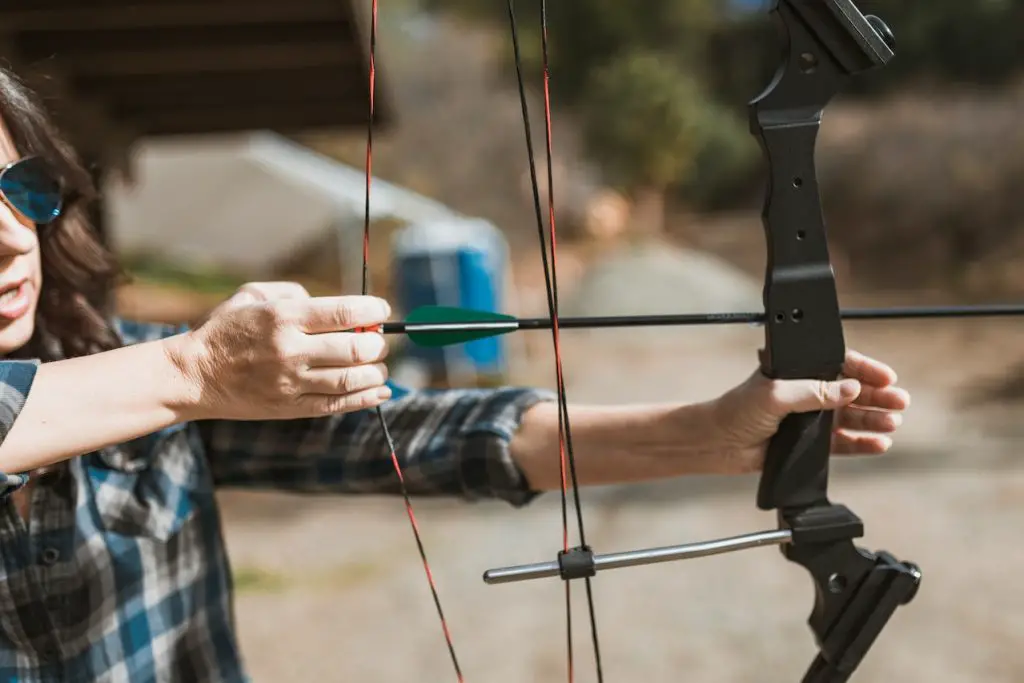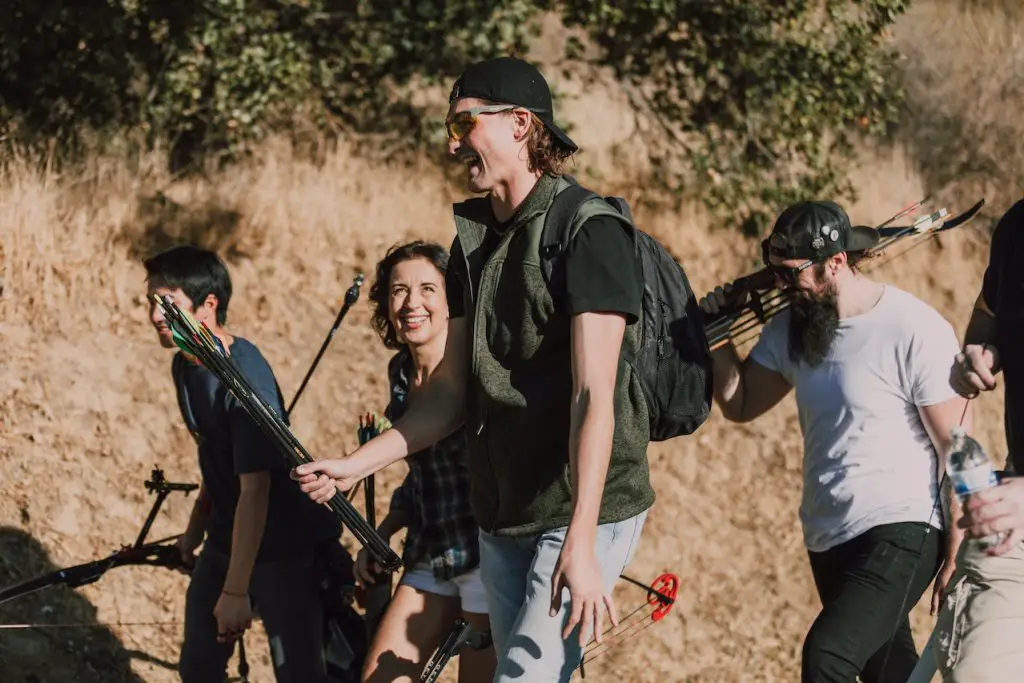The 5 Most Common Causes of Accidental Deaths in Bowhunting: How to Stay Safe on Your Next Hunt!

Bowhunting is a thrilling and exciting sport, but it can also be dangerous.
Every year, countless hunters fall victim to accidental deaths caused by various hazards and threats. But what are these dangers, and how can we protect ourselves while enjoying the sport we love?
In this article, we reveal the 5 most common causes of accidental deaths in bowhunting and show you how to stay safe on your next hunt.
Knowing the most common causes of accidents can help hunters make informed decisions about their hunting activities and reduce the risk of harm.
Let’s quickly move on to the causes;
1. Accidental Shootings
Misidentification of Target
One of the most common causes of accidental shootings in bowhunting is misidentifying the target. Hunters may mistake another hunter or a non-target animal for the target animal, leading to an accidental shooting.
Tree Stand Accidents
Tree stand accidents can also result in accidental shootings in bowhunting. Hunters may accidentally discharge their bow while climbing into or out of a tree stand, or while adjusting their position.
Shooting While Climbing or Descending
Accidental shootings can also occur while a hunter is climbing or descending a tree. Hunters may accidentally discharge their bow while trying to maintain balance, or if their bow snags on branches or other obstacles.
Accidental Discharge of Bow
Accidental discharge of a bow can also occur if the hunter loses control of the bowstring or if the bow is not properly secured. This can result in an accidental shooting, which can be dangerous or even fatal.
These accidental shootings can lead to serious injury or death, and it is important for hunters to take steps to minimize the risk of these types of accidents. This may include properly identifying targets, using proper tree stand safety equipment, and practising safe shooting techniques.
elaborate on III
2. Hunting Accidents Involving Trees and Tree Stands
Falls from Tree Stands
Falls from tree stands are a common cause of injury and death in bowhunting. Hunters may slip or fall while climbing into or out of a tree stand, or while adjusting their position.
These falls can result in serious injury or death, especially if the hunter is not wearing proper safety gear or using a safety harness.
Tree Stand Collapse
Tree stand collapses can also occur, resulting in falls and injuries. This may happen if the tree stands are not properly secured, or if the tree stands are damaged or worn out.
Tree Stand entanglement
Hunters may also become entangled in their tree stand or safety harness, leading to injury or death. This can happen if the hunter’s clothing or gear becomes caught on the tree stand or if the safety harness is not properly secured.
To minimize the risk of hunting accidents involving trees and tree stands, it is important for hunters to use proper safety gear and equipment, and to follow all safety precautions when using a tree stand. This may include wearing a safety harness, using a secure tree stand, and properly securing all gear and equipment.
Also, Inspect the tree stands at your hunting location to ensure they are sturdy and secure. If you plan to hunt near water, bring appropriate water safety gear and equipment to ensure your safety.”
3. Other Causes of Accidental Deaths in Bowhunting
Environmental Hazards
Environmental hazards, such as extreme weather conditions, rugged terrain, and hazardous wildlife, can also lead to accidental deaths in bowhunting. Hunters may suffer from hypothermia, dehydration, or injuries from falls or animal attacks, leading to serious injury or death.
Hunting-related Illnesses and Injuries
Hunting-related illnesses and injuries can also occur, including snake bites, insect stings, and illnesses from contaminated food or water. These illnesses and injuries can quickly become serious and life-threatening, especially if the hunter is not prepared or does not have access to medical treatment.
Hunting-related Vehicle Accidents
Hunting-related vehicle accidents, such as collisions with other vehicles or wildlife, can also lead to serious injury or death. These accidents may occur while driving to or from a hunting location, or while transporting game or equipment.
To minimize the risk of these types of accidents, it is important for hunters to be aware of the environmental hazards and to take appropriate precautions. This may include wearing proper clothing, carrying adequate food, water, and medical supplies, and avoiding risky hunting activities. Hunters should also be cautious when driving to and from hunting locations and should follow all traffic laws and safety precautions.
Animal Attacking
Hunting can be a hazardous activity, especially when the hunted animal feels threatened. This can lead to attacks, causing serious injury or even death to the hunter. Some of the most common animals that have been known to attack hunters include wild boars, cougars, snakes, and even deer.
To minimize these risks, it’s essential to be aware of safety measures and to do everything possible to avoid confrontations with potentially dangerous animals.”
4. Accidental Shooting while Bow Hunting & How To Avoid
Tragically, there have been instances of accidental deaths caused by hunters mistaking another person for their target. Following are guidelines to keep yourself and others safe from the accidental shooting:-
- Know your target: Make sure you have a clear view of your target and understand what is beyond it before you shoot. Do not take shots that could result in an arrow hitting a person or property.
- Wear bright clothing: Wear brightly coloured clothing so that other hunters can easily see you and avoid shooting in your direction.
- Use a tree stand: If you are using a tree stand, make sure it is positioned in a way that does not obstruct the view of other hunters.
- Communicate with other hunters: If you are hunting in a group, make sure everyone is aware of each other’s positions and communicate regularly to avoid confusion.
- Respect property boundaries: Always make sure you have permission to hunt on a particular piece of property and respect the boundaries of private land.
- Use a whistle: Carry a whistle that can be used to alert other hunters of your presence, especially when you are moving from one location to another.
- Follow safety guidelines: Always follow established safety guidelines and rules for hunting, such as only shooting in a safe direction and unloading your bow when not in use.

5. Fire Hazards
Fire hazards can pose a significant threat to hunters, especially during the dry season. The following tips can help prevent fire hazards while bow hunting:
- Avoid campfires: If possible, avoid having a campfire in the hunting area, as it can easily spread and cause a wildfire.
- Use a portable stove: Instead of a campfire, use a portable stove for cooking and heating. Make sure to follow the manufacturer’s instructions and take appropriate safety measures.
- Avoid smoking: Do not smoke while hunting, as the risk of starting a fire is high.
- Use caution with equipment: Be mindful of how you use your equipment, such as avoiding using metal tools to strike rocks or dragging equipment over a dry brush, which could create sparks that start a fire.
- Know how to put out a fire: If you do start a fire, make sure you know how to put it out properly, using water or dirt, and never leaving it unattended.
- Know the location of water sources: If a fire does break out, it’s important to know the location of nearby water sources that can be used to extinguish the fire.
Importance of Safety Measures and Precautions
A. Role of Safety Gear and Equipment
Safety gear and equipment, such as tree stand safety harnesses, helmets, and first-aid kits can play a critical role in preventing accidental deaths in bowhunting. By using proper safety gear and equipment, hunters can reduce the risk of injury and increase their chances of survival in case of an emergency.
When faced with danger, avoid entering unfamiliar territory. Exercise caution when hunting in a new location.
To ensure safety, always unload your bow when not in use and never aim it in an unsafe direction.
Check : How to Safely Unload a Crossbow
B. Importance of Awareness and Preparation
Awareness and preparation are also important for safe bowhunting. Hunters should be aware of their surroundings, including potential hazards and dangerous wildlife, and take steps to minimize their risk.
They should also be prepared for emergencies, such as bringing a first-aid kit and a means of communication.
C. Benefits of Training and Education
Training and education are also important for safe bowhunting. Hunters should receive training on safe hunting practices, including proper use of hunting equipment, identification of target species, and handling of firearms.
They should also receive education on the regulations and laws governing hunting activities, as well as on environmental and wildlife conservation practices.
Conclusion
By taking these safety measures and precautions, hunters can reduce the risk of accidental deaths in bowhunting and enjoy the sport in a safe and responsible manner.
You might be interested in
